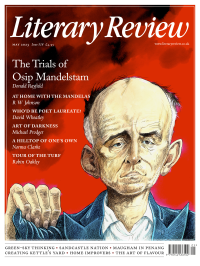Miranda Seymour
Sun Kings & Shady Characters
Once Upon a Time World: The Dark and Sparkling Story of the French Riviera
By Jonathan Miles
Atlantic Books 464pp £22
In the years before the pandemic, Nice airport, which once boasted a single runway with a converted villa as its terminal, was welcoming around thirteen million sun-seeking visitors a year. Jet fumes spewed grime into the Riviera’s azure skies as engines roared above the Baie des Anges – named, as Jonathan Miles tells readers in his entertaining and wide-ranging book, after the hideous and inedible local angel shark, a local predator (the Promenade des Anglais also owes its name to the fish and not to English tourists). But then events beyond the control of any rapacious mayor or greedy oligarch overtook the beautiful but exploited coastline that Somerset Maugham, a long-term resident of Cap Ferrat, once described as ‘a sunny place for shady people’. For a few tranquil months at the start of the pandemic, no tourists came to Nice and a deserted Côte d’Azur reverted to the sleepy paradise it had been when an English peer called Lord Brougham stumbled upon it in 1835. Brougham, blocked by a cholera outbreak from continuing his journey east towards Italy, smelled the lemon-scented air, discovered bouillabaisse and decided to build a villa in Cannes. And so, in Miles’s account, began the English love affair with the Côte d’Azur.
The English were not alone in their discovery of France’s loveliest coastline, however. In 1831, a 27-year-old Hector Berlioz planned the overture for his King Lear as he mooched around the olive groves of Villefranche (while also plotting the murder of a girlfriend who had married another man). Berlioz’s friend and supporter Paganini, famous for the devilish brilliance of his playing, was only fifty-seven when he died while visiting Nice in 1840. He was embalmed and put on show, like Lenin, in a glass coffin. Count Leo Tolstoy arrived on the Riviera in 1860, grieving for a lost brother, just after the Russian navy had gladly accepted Napoleon III’s offer of a coveted Mediterranean port at Villefranche.
Russia was the first foreign power to make the Riviera a holiday home for royalty (Queen Victoria preferred her husband’s homeland, Germany). A railway line from St Petersburg ran via Warsaw and Vienna to Nice, where the tsars oversaw the creation of the splendidly domed Russian Orthodox cathedral

Sign Up to our newsletter
Receive free articles, highlights from the archive, news, details of prizes, and much more.@Lit_Review
Follow Literary Review on Twitter
Twitter Feed
It wasn’t until 1825 that Pepys’s diary became available for the first time. How it was eventually decrypted and published is a story of subterfuge and duplicity.
Kate Loveman tells the tale.
Kate Loveman - Publishing Pepys
Kate Loveman: Publishing Pepys
literaryreview.co.uk
Arthur Christopher Benson was a pillar of the Edwardian establishment. He was supremely well connected. As his newly published diaries reveal, he was also riotously indiscreet.
Piers Brendon compares Benson’s journals to others from the 20th century.
Piers Brendon - Land of Dopes & Tories
Piers Brendon: Land of Dopes & Tories - The Benson Diaries: Selections from the Diary of Arthur Christopher Benson by Eamon Duffy & Ronald Hyam (edd)
literaryreview.co.uk
Of the siblings Gwen and Augustus John, it is Augustus who has commanded most attention from collectors and connoisseurs.
Was he really the finer artist, asks Tanya Harrod, or is it time Gwen emerged from her brother’s shadow?
Tanya Harrod - Cut from the Same Canvas
Tanya Harrod: Cut from the Same Canvas - Artists, Siblings, Visionaries: The Lives and Loves of Gwen and Augustus John by Judith Mackrell
literaryreview.co.uk